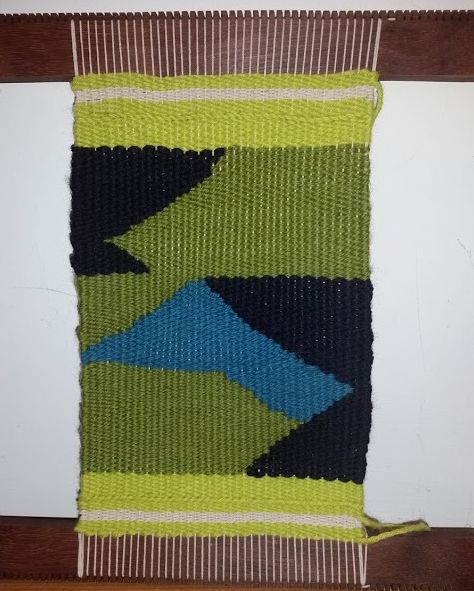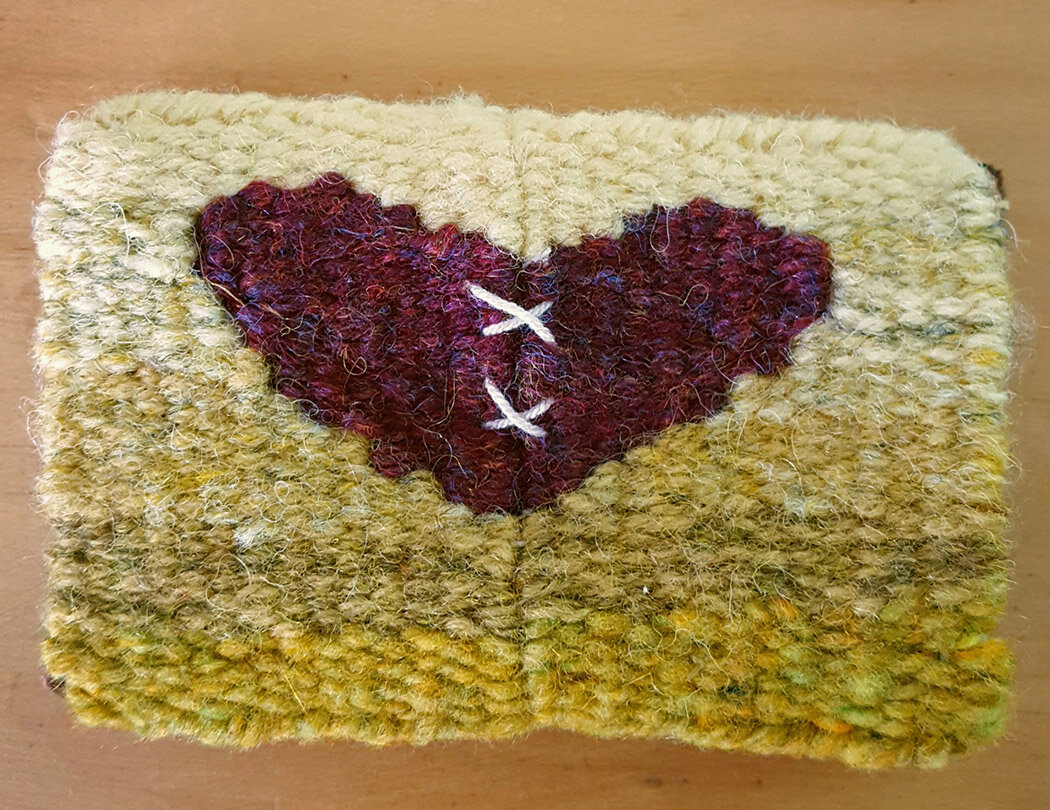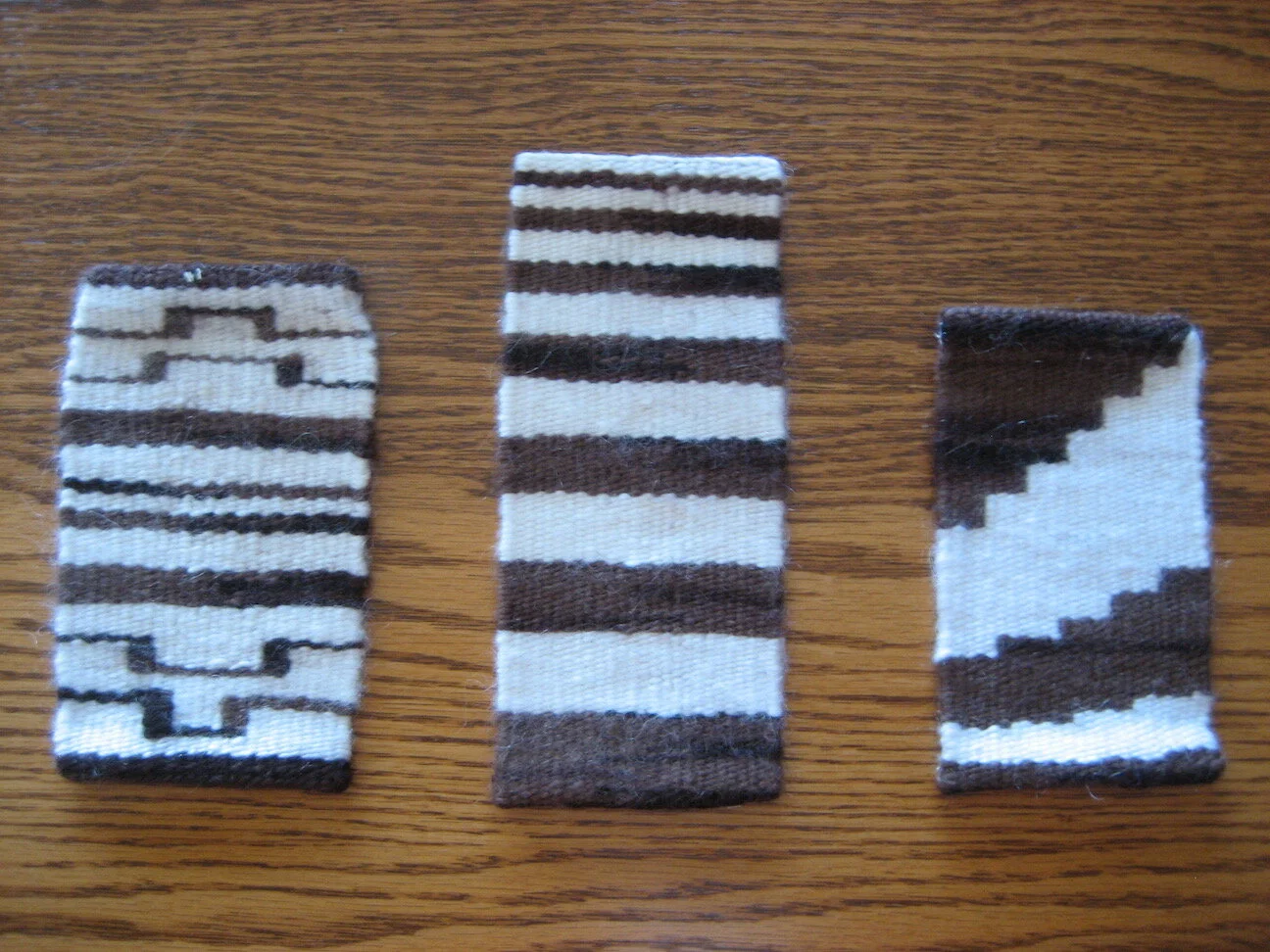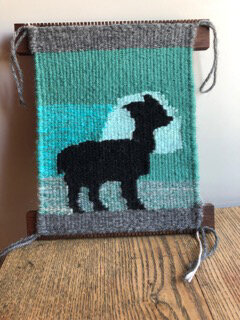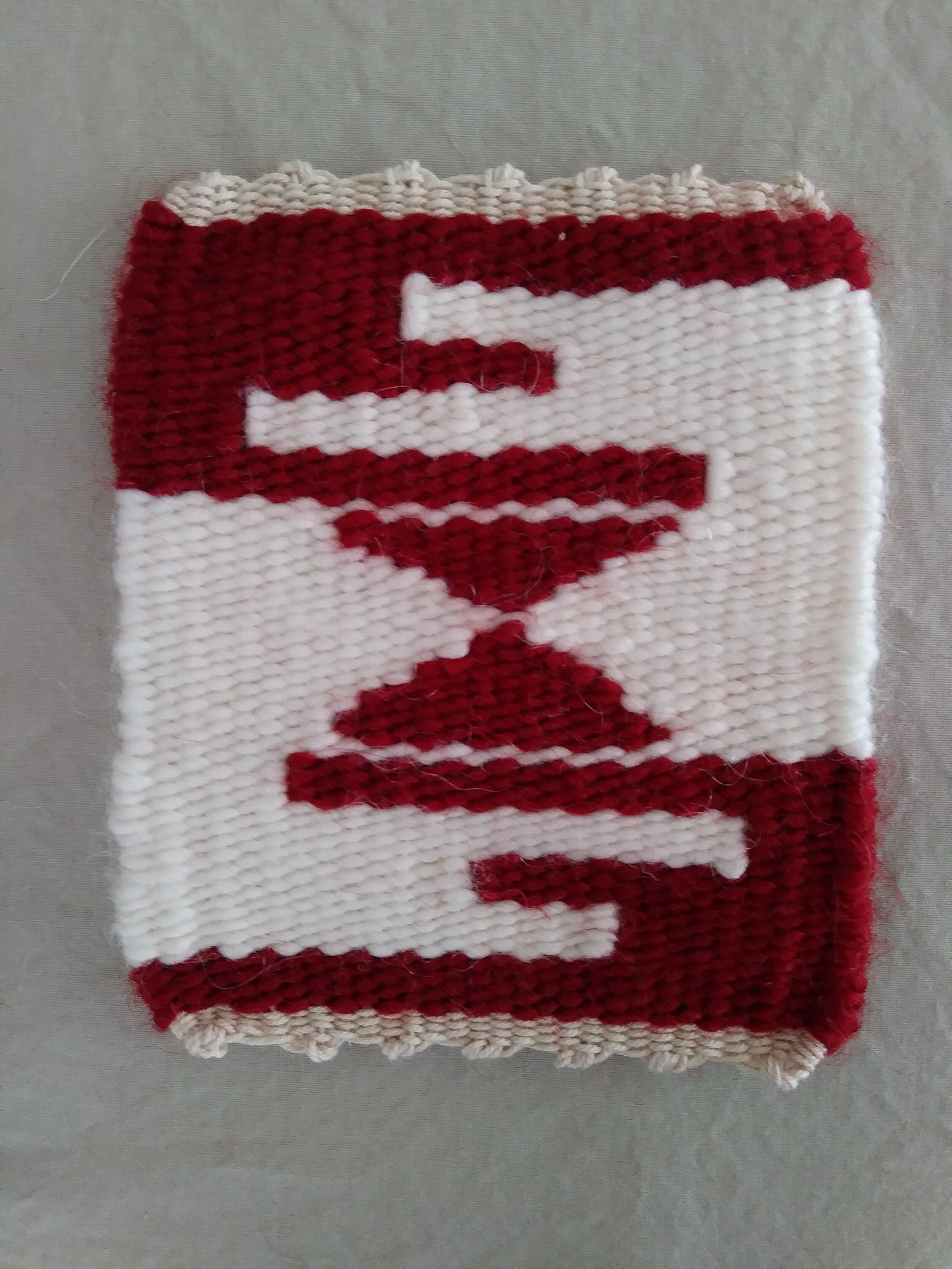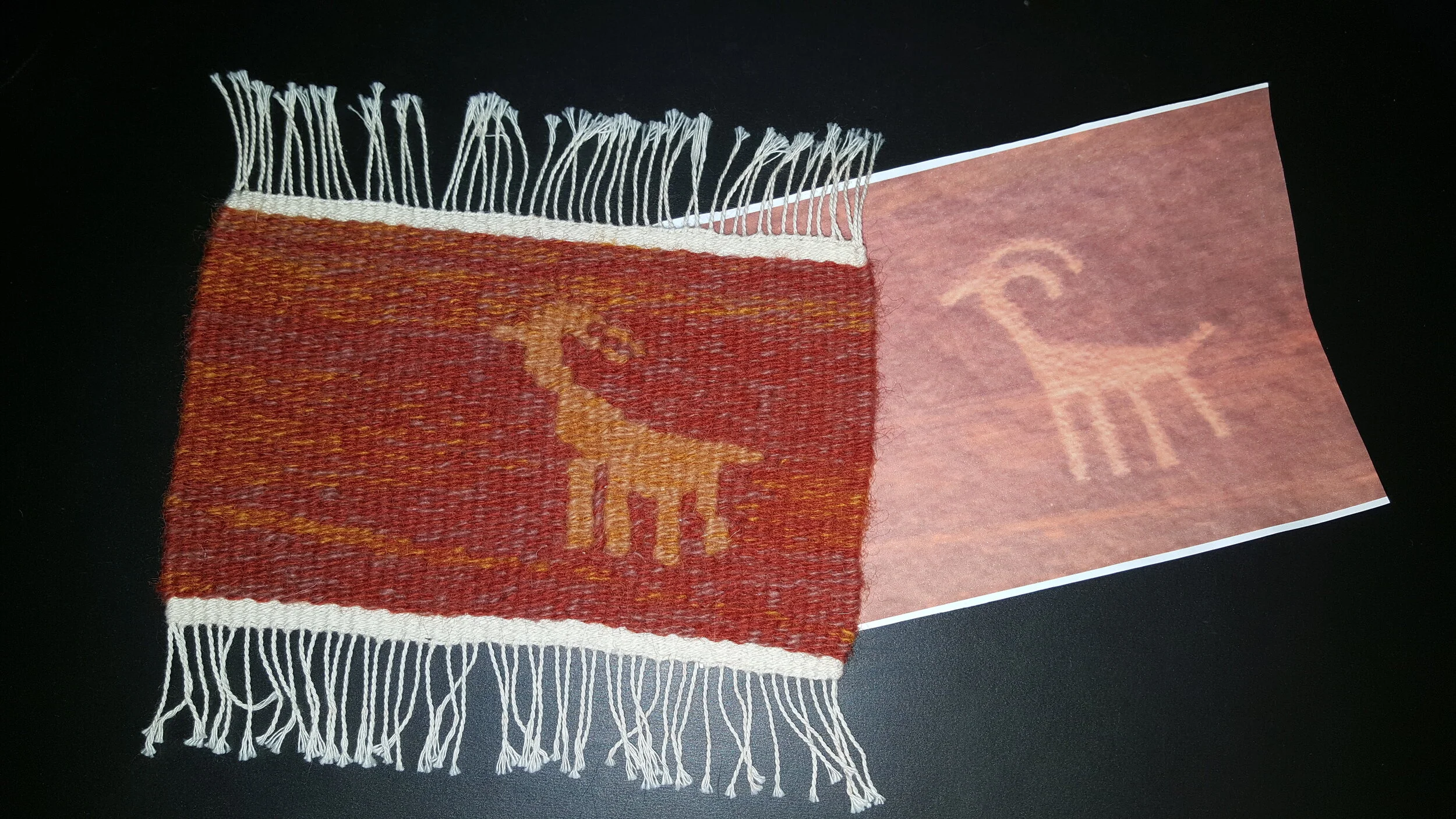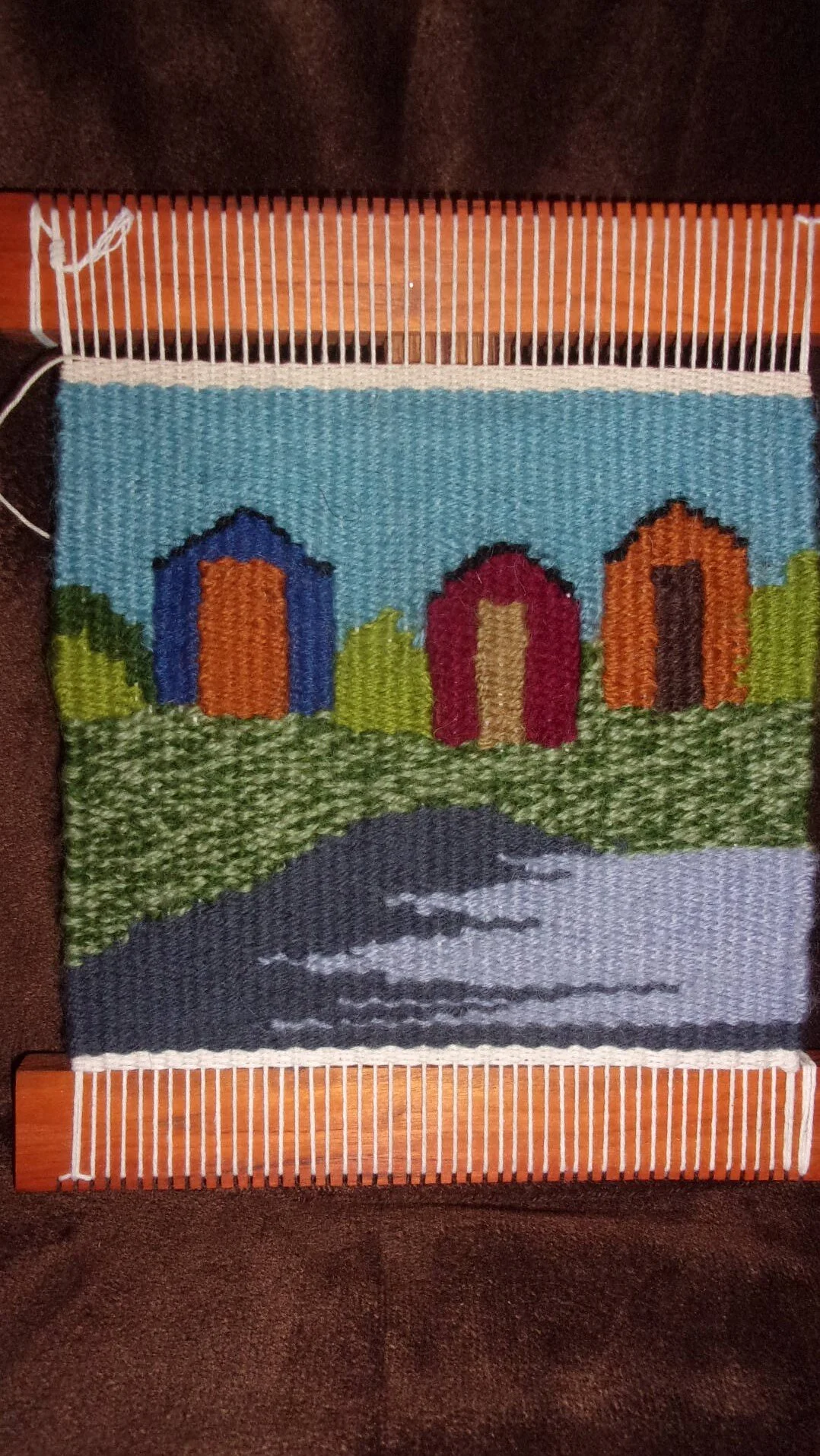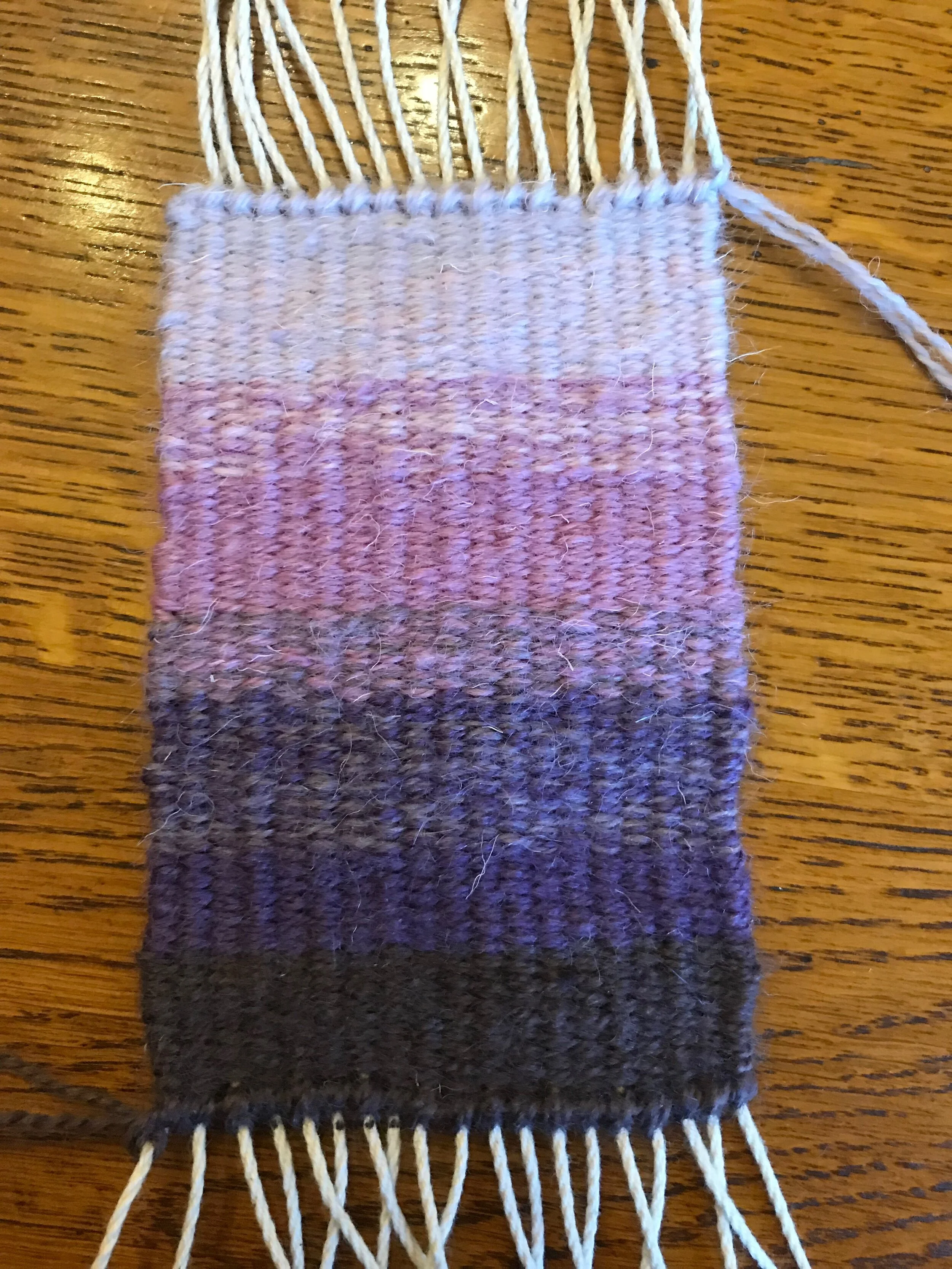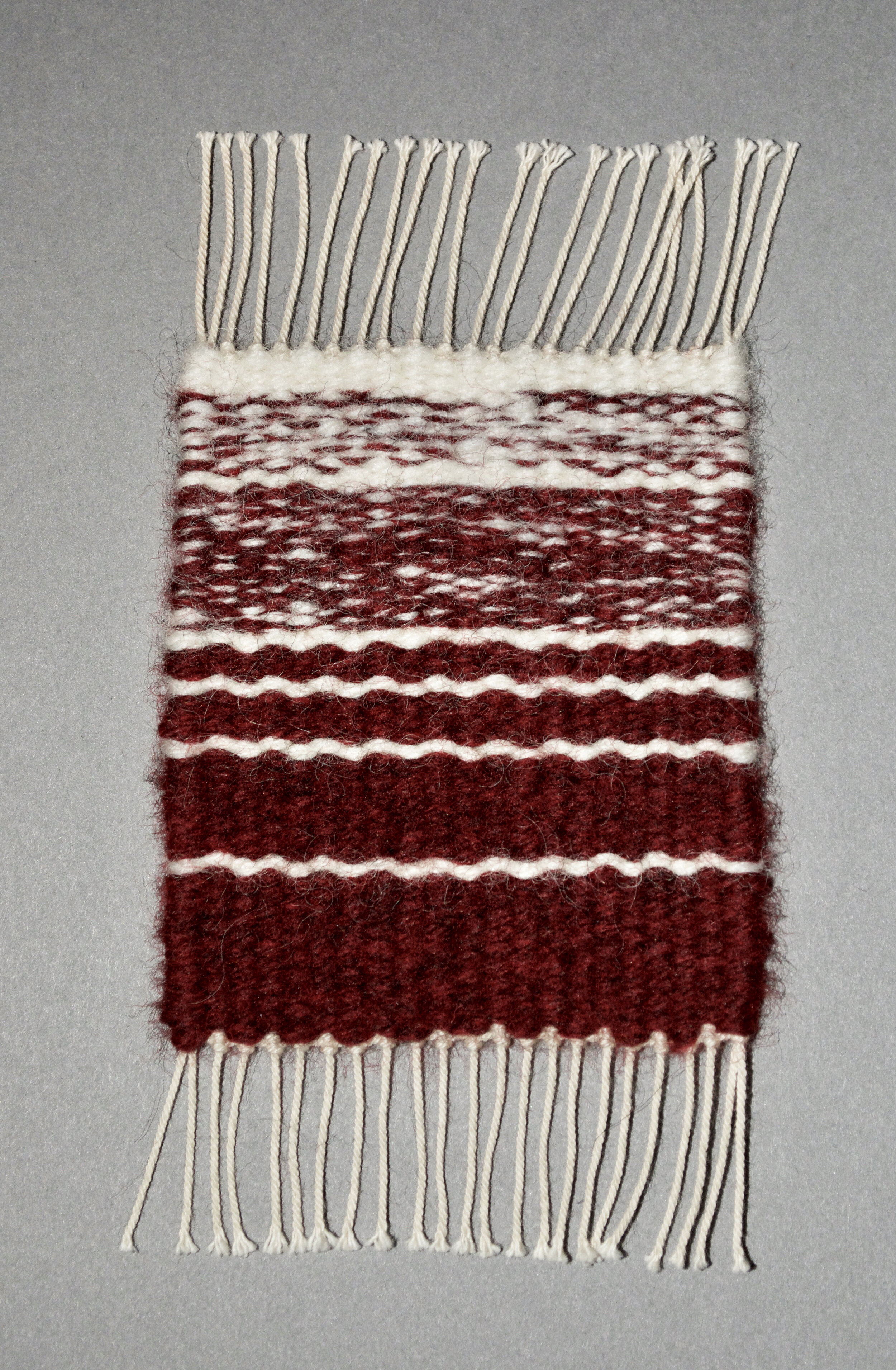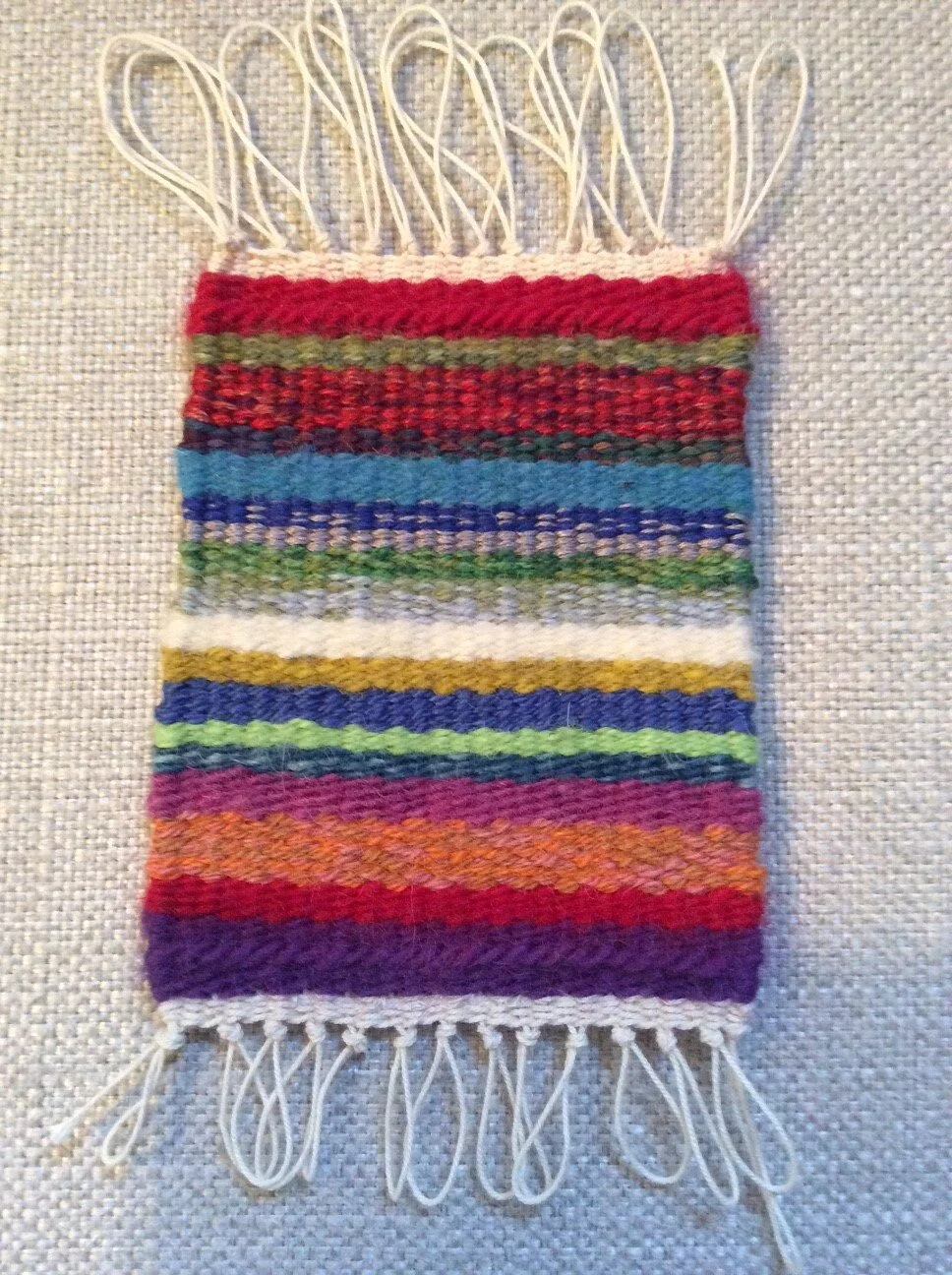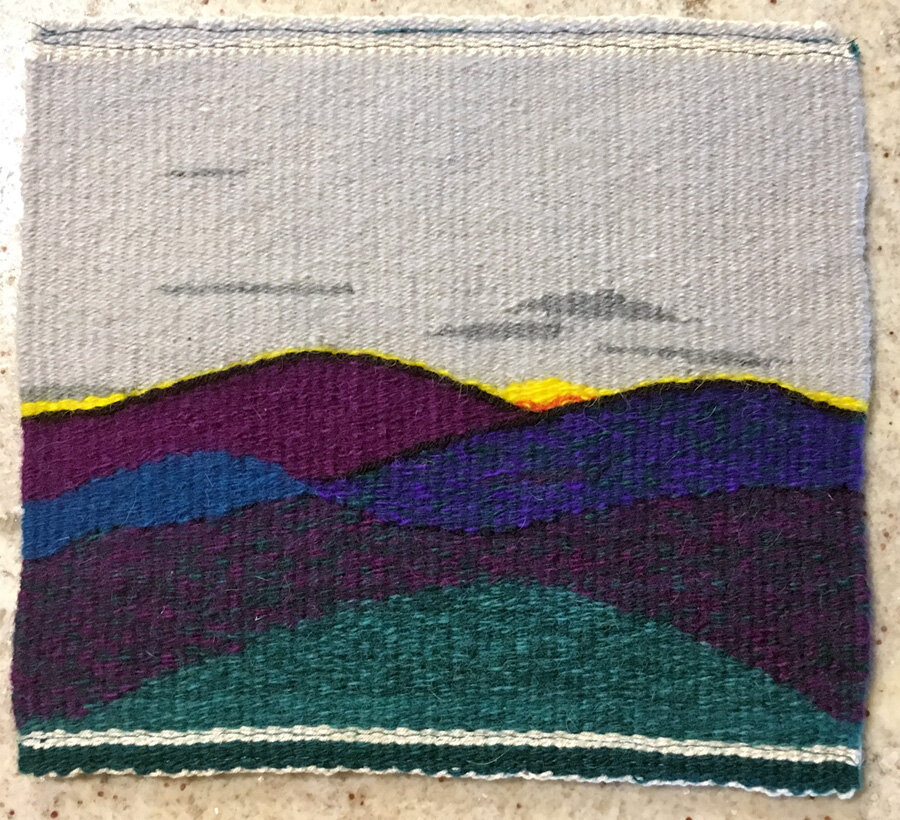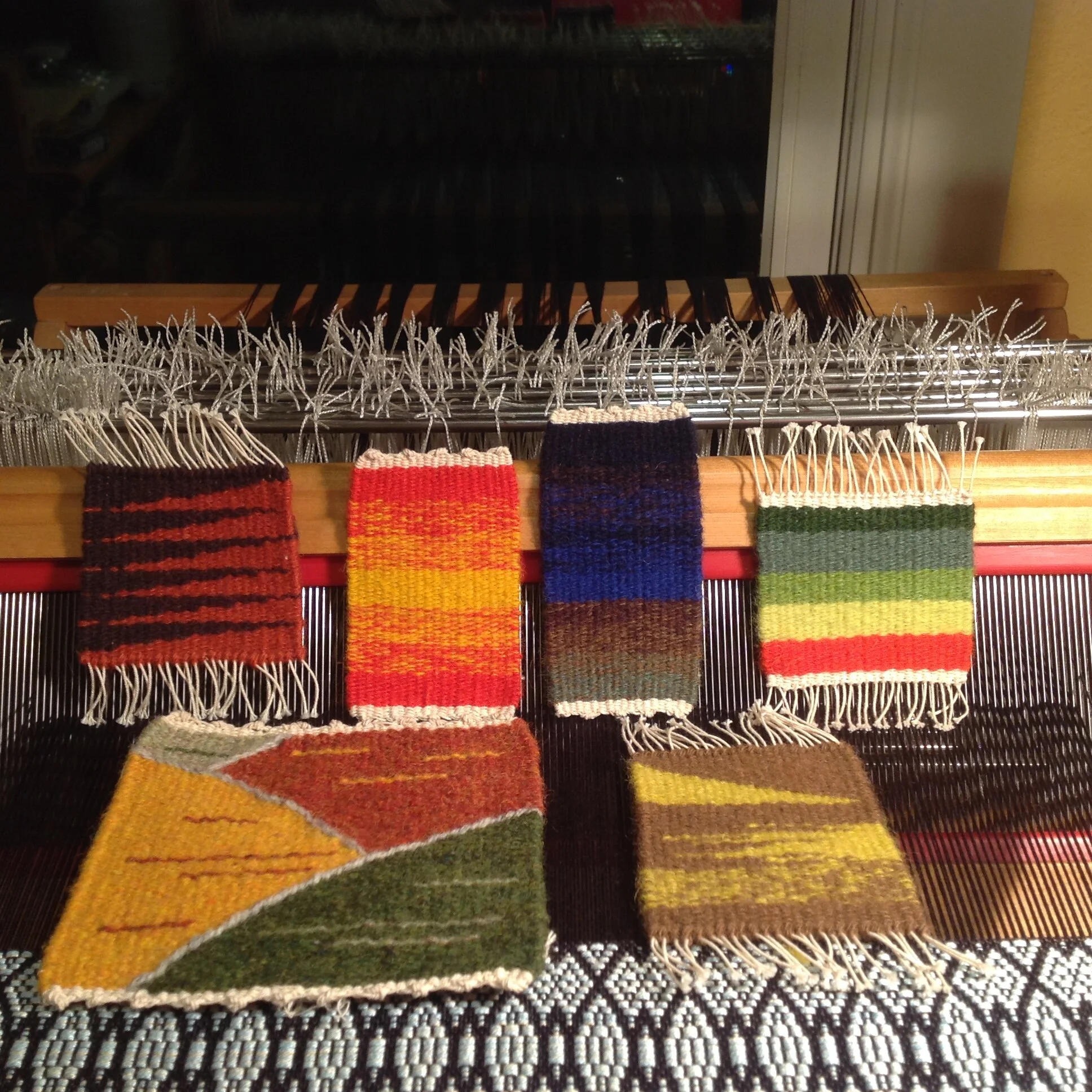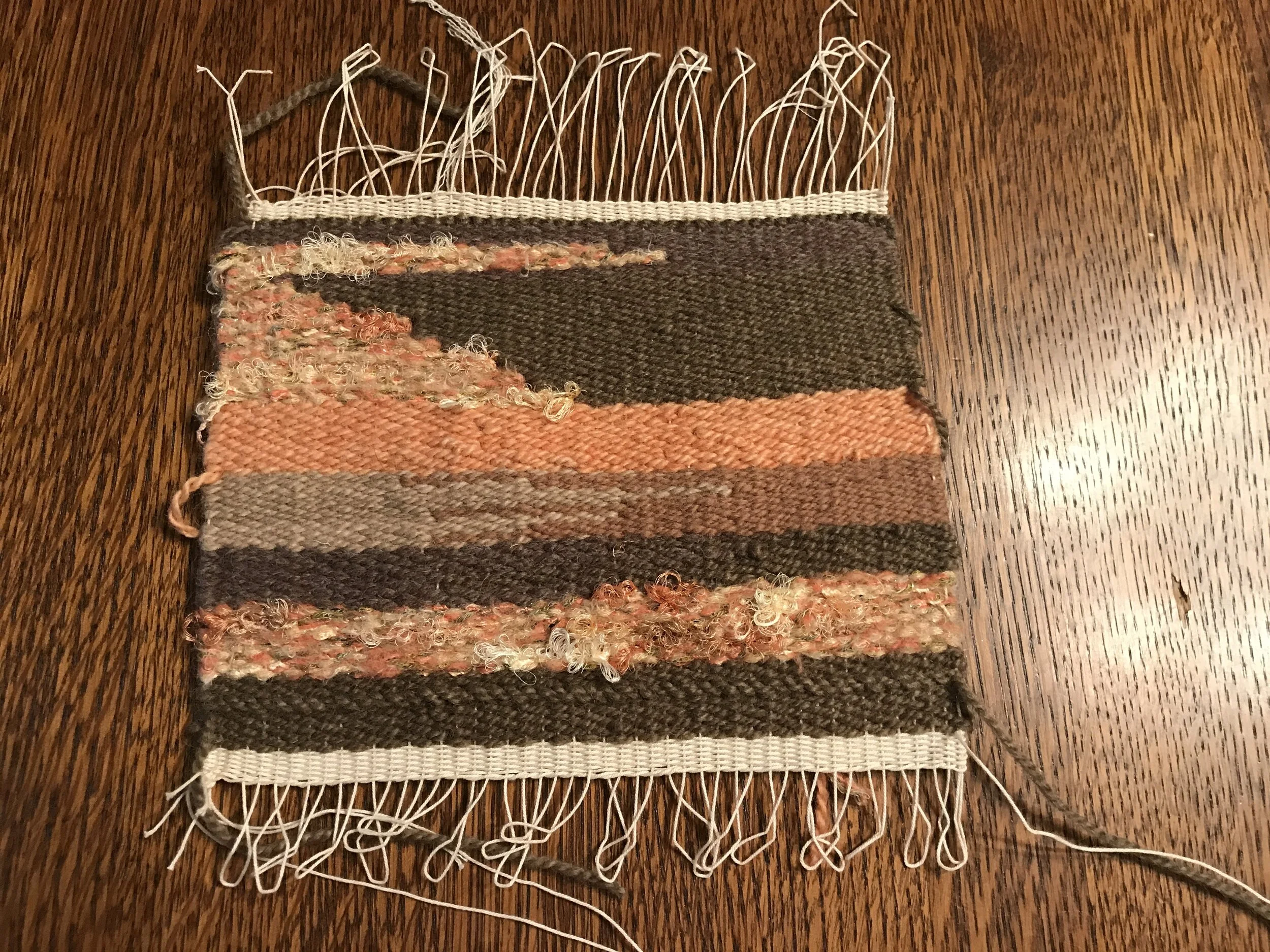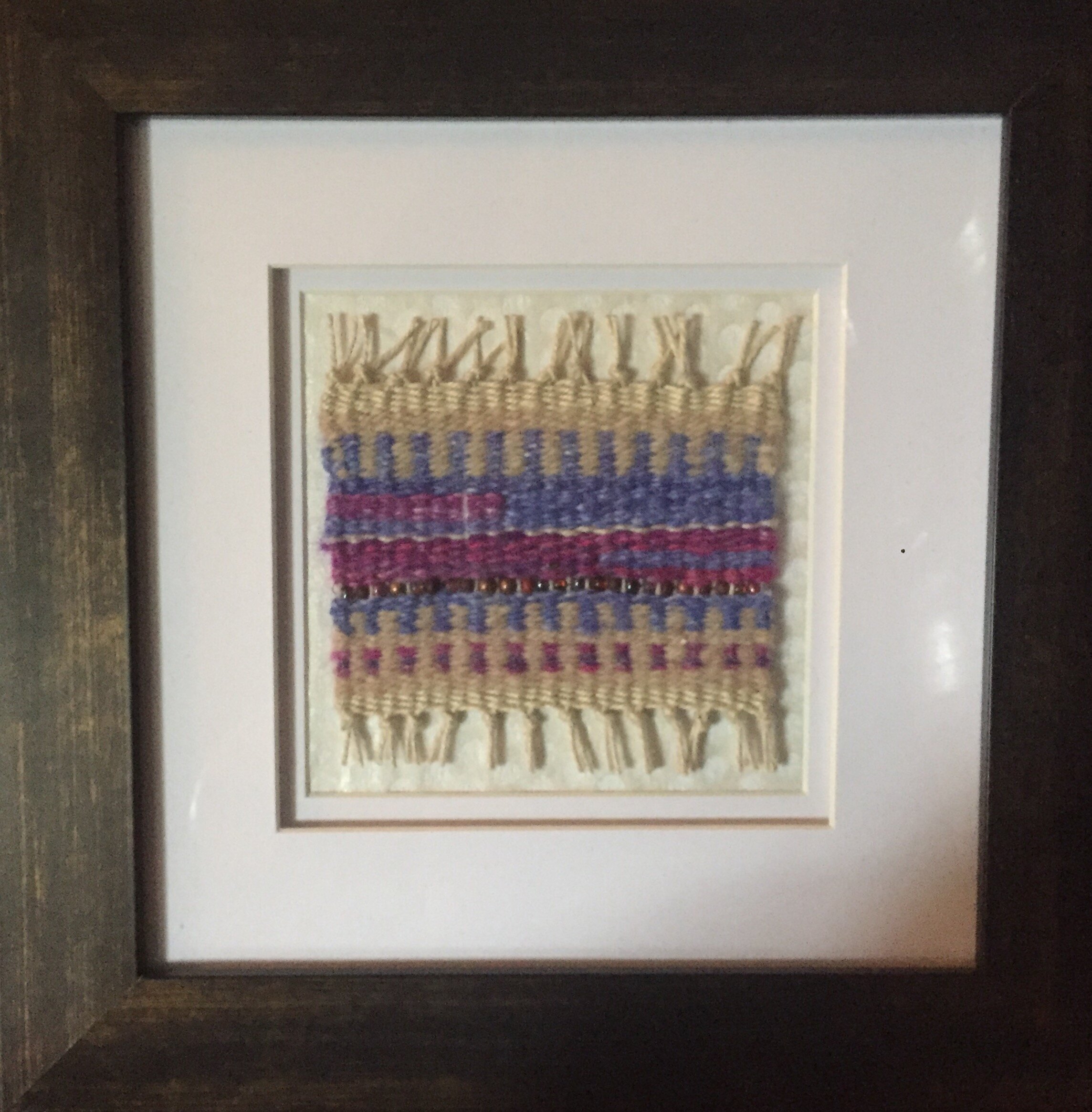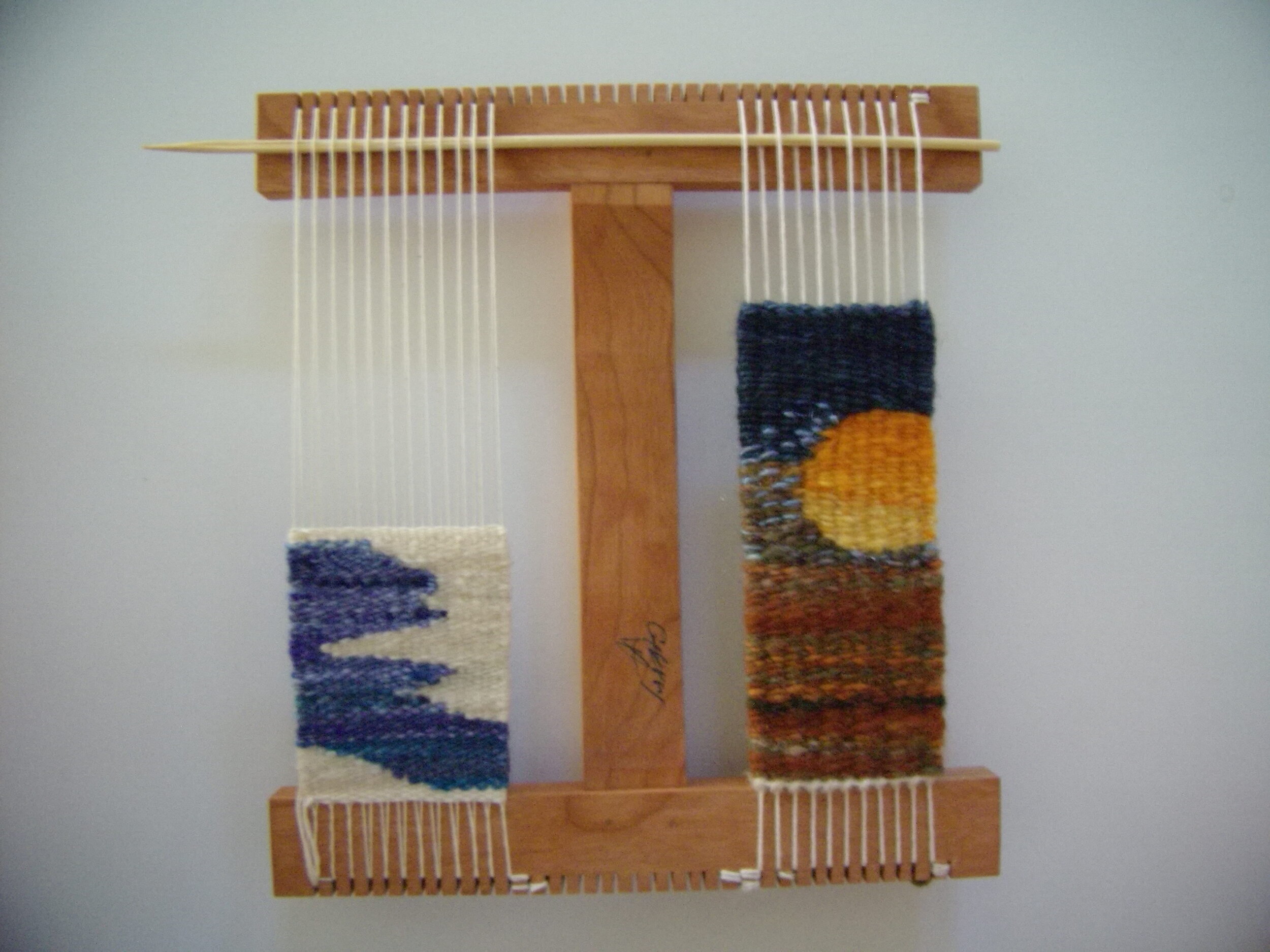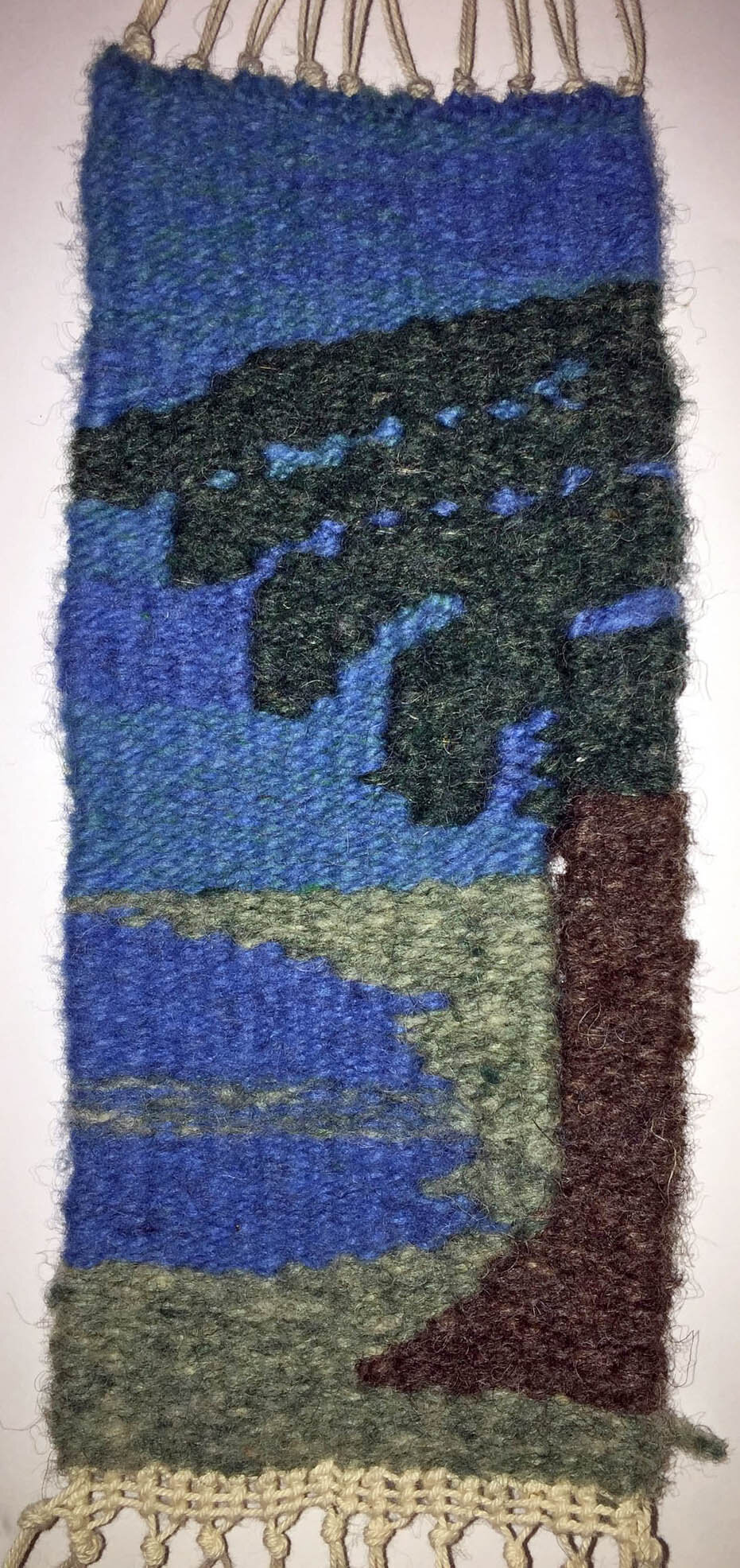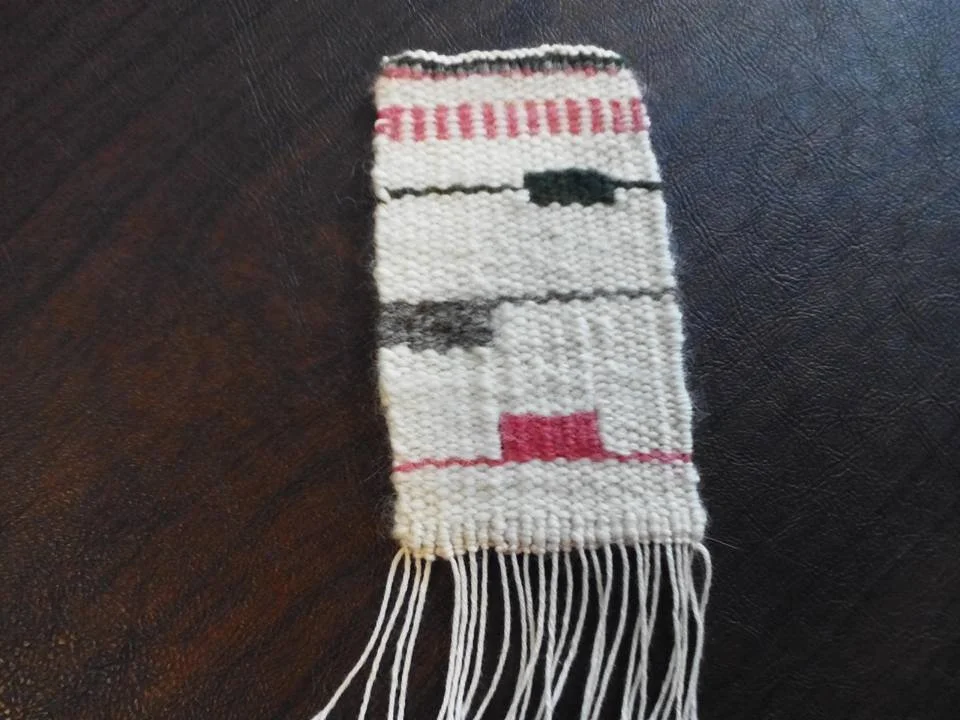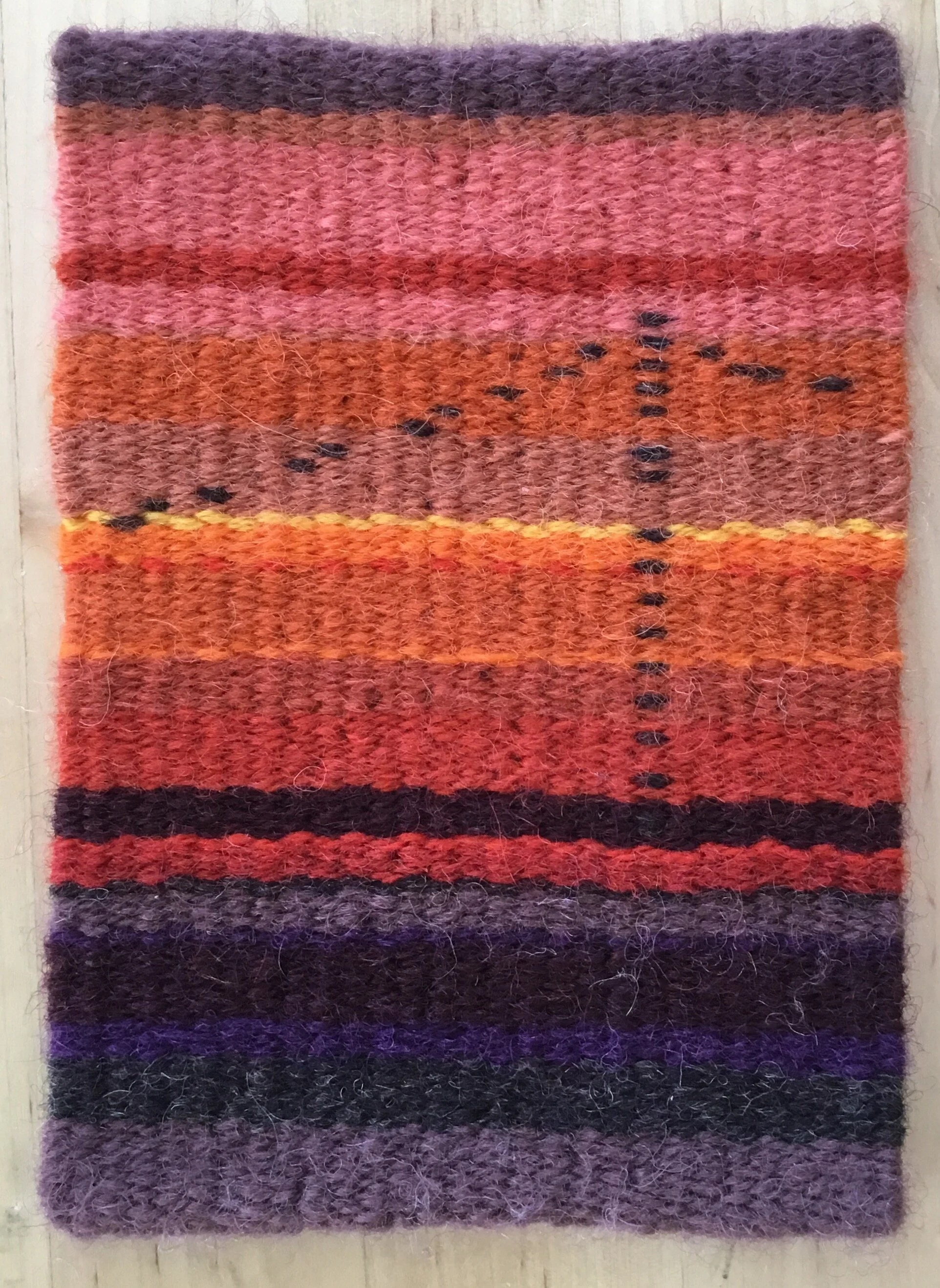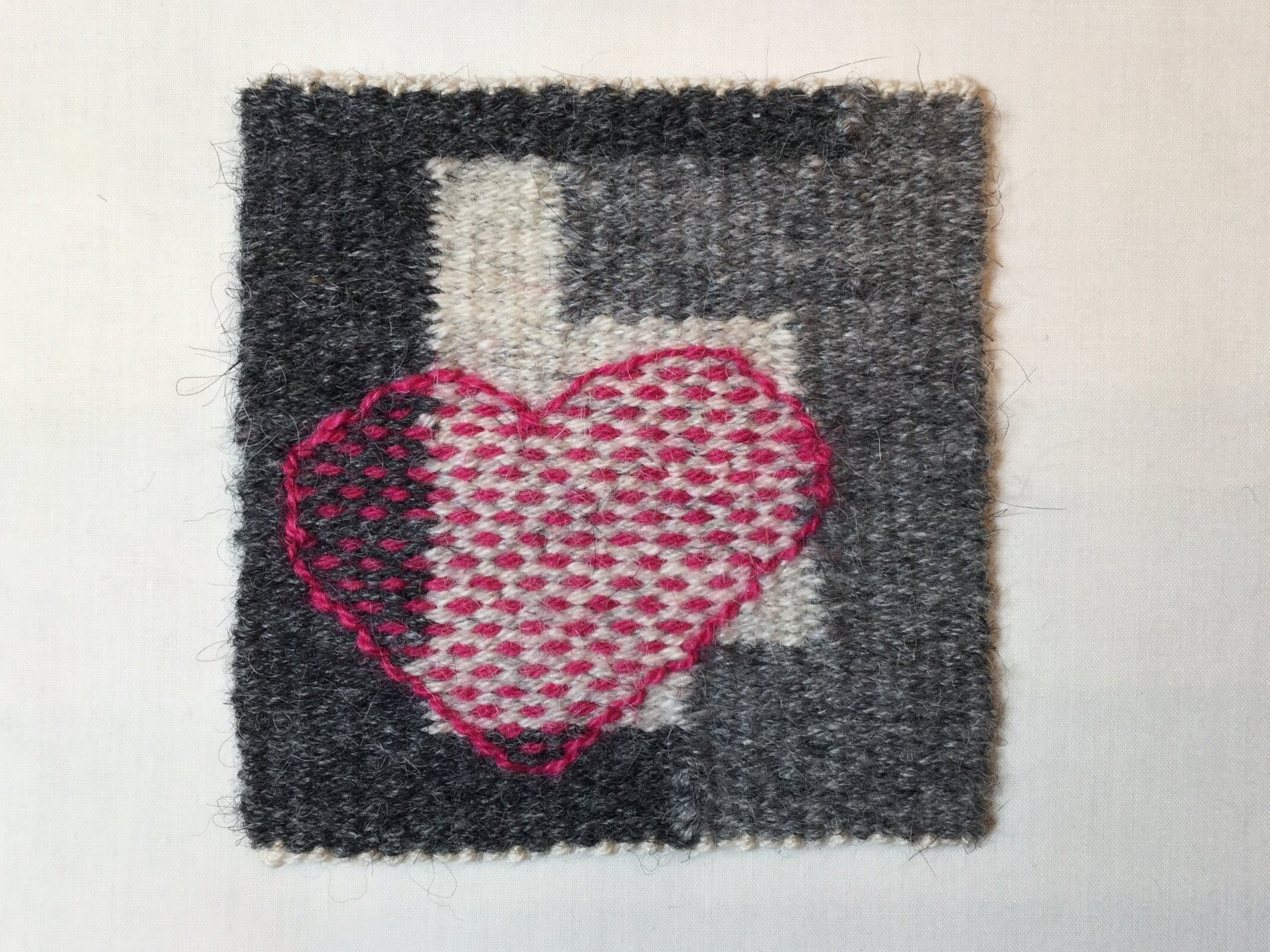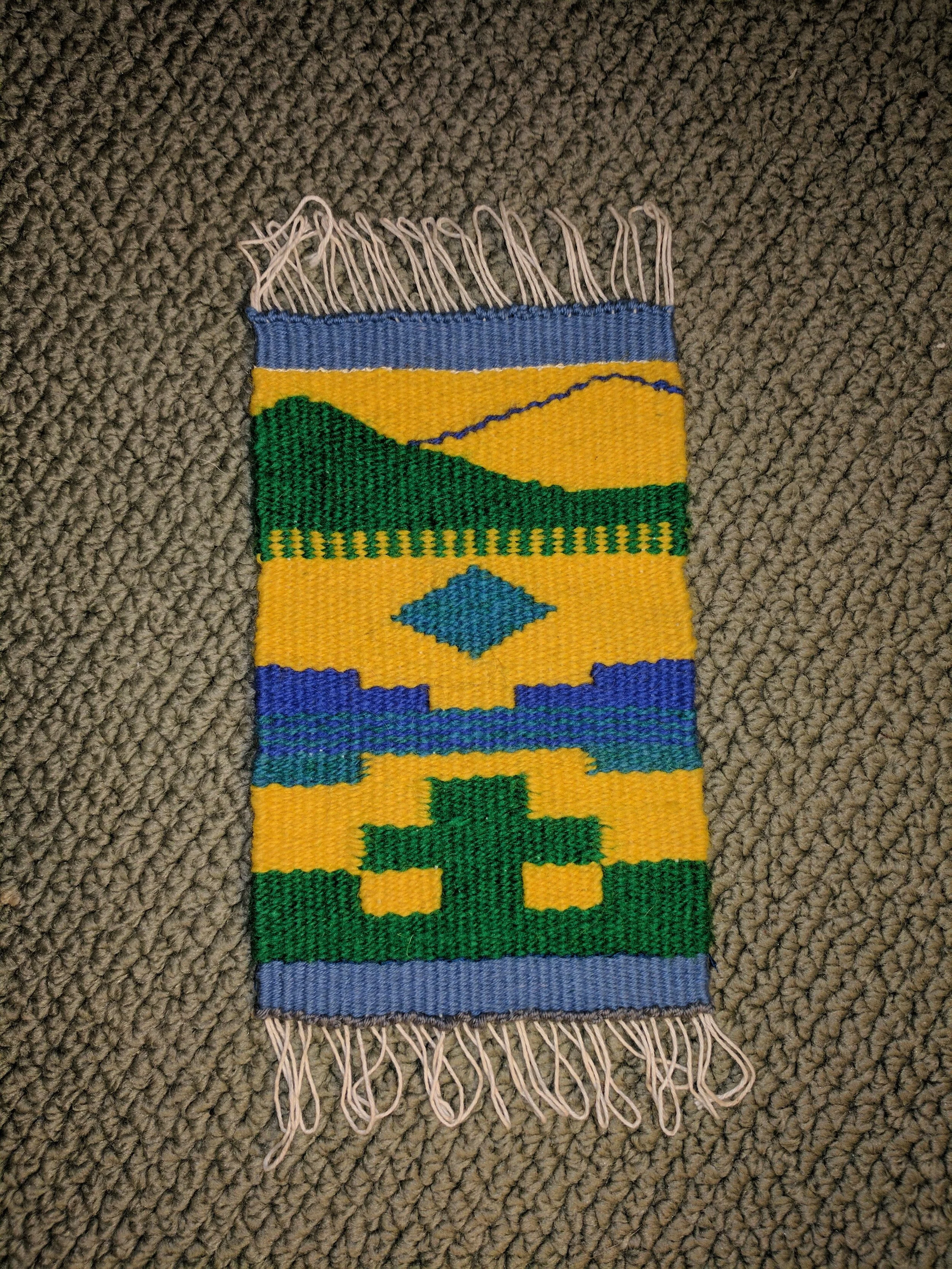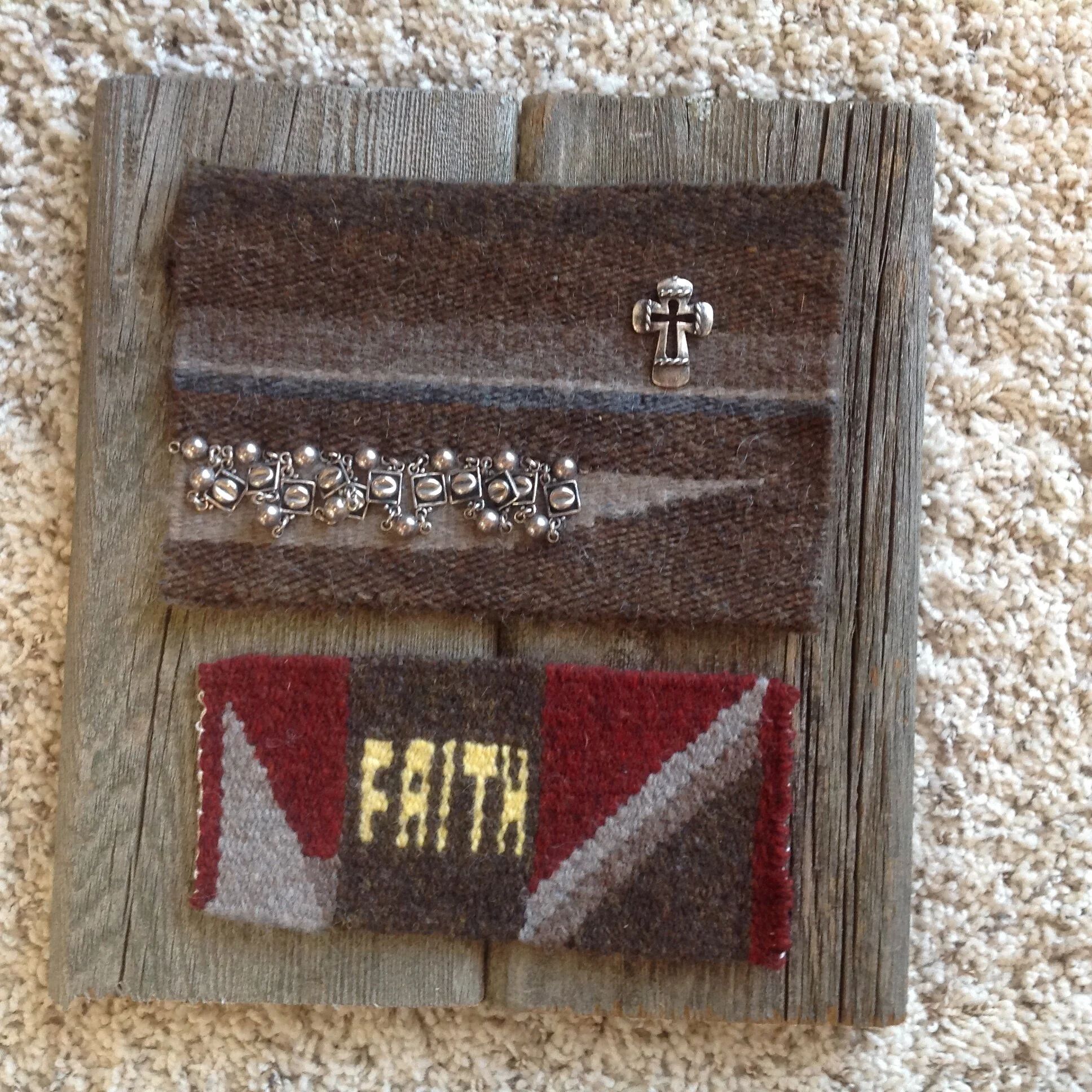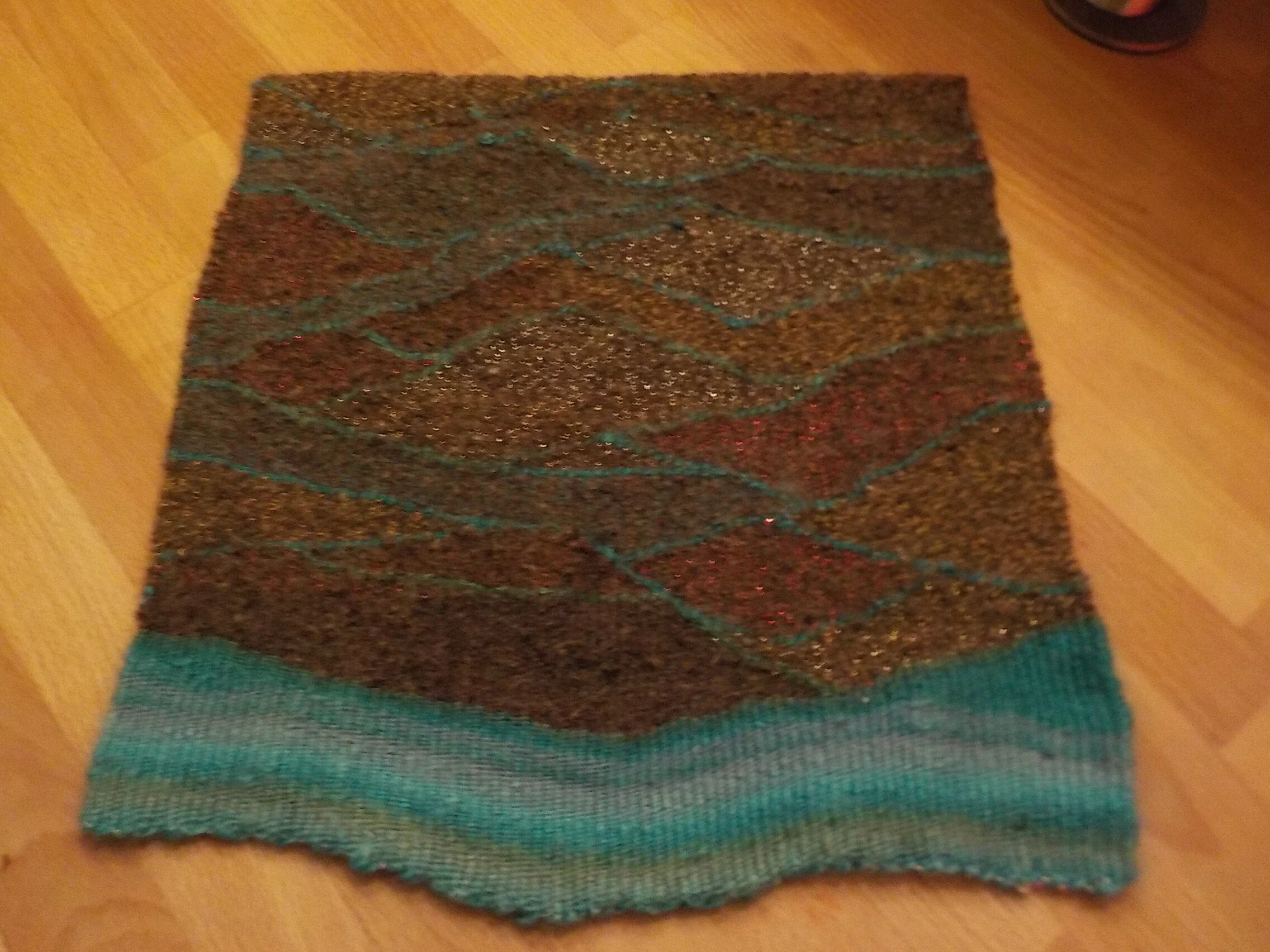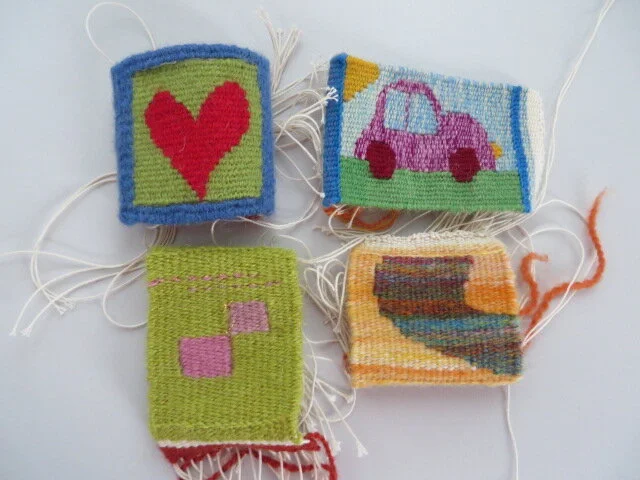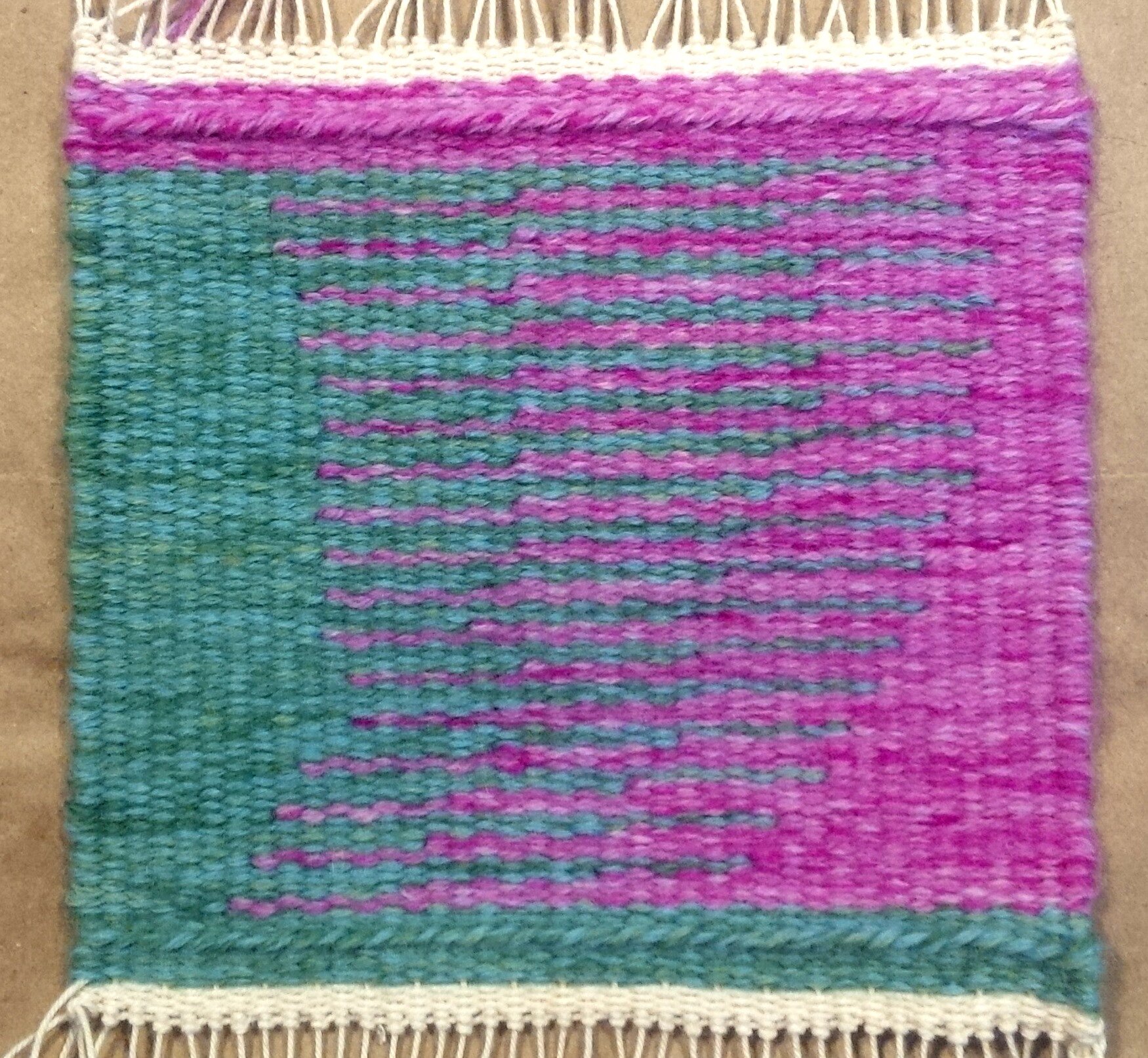Little Looms
Weaving images with yarn is a wonderful way to tap into your creativity. Weaving Tapestry on Little Looms is an online class that teaches you how to warp and weave tapestries on small pegged or slotted looms.
Weaving tapestry is a wonderful way to explore your innate creativity while working with a most versatile and luscious material — yarn.
“I loved this course and I learned a lot! I had tried to learn beginning tapestry techniques from a book but it didn’t work out for me. This course was just what I needed. Thanks so much for offering this!”
Weaving Tapestry on Little Looms teaches you
about different small looms and how to warp them
how to make a variety of headers which allows you to finish the tapestry with hem, fringe, or a braid
the basics of weaving shapes which make up all tapestry compositions
We look at different projects and I offer inspiration from small-format tapestry weavers. This course also includes a video about warping copper pipe looms and resources for how to make them.
We’ll address tapestry weaving from a traditional techniques perspective. Our goal is to make images in weaving. Tapestry weaving has existed for thousands of years and there are some basic rules that are important when constructing a textile in this way. I’ll teach you the foundations of tapestry weaving and get you started on a life-long exploration of expression through yarn.
You can see the entire course contents below. If you have questions after reviewing the information on this page and under the FAQ pages, please do contact me!
Course outline
The steps in the course can be seen in the course platform HERE.
Note the tab in the center of the page that also says “About” with more information about the course. This is also where you register for the course!
Pricing
Weaving Tapestry on Little Looms is $149. That includes access for as long as you want it so if you need to come back to the course a few years from now, you can do that!
I have never woven tapestry before. Can I take this class?
Yes! You're in good company. I’ll show you how weaving works and what the most important concepts you need to know are.
This is not a comprehensive techniques class. If you want to know all the fundamentals of tapestry weaving, you'll want my Warp and Weft: Learning the Structure of Tapestry class. In fact, the two classes compliment each other nicely.
What is the difference between Weaving Tapestry on Little Looms and Warp and Weft?
This blog post will help you figure out which course is the best choice for you.
I have woven a lot of tapestry, but I struggle with how to manage my small tapestry loom. Will this class work for me?
Yes! There are four videos about different ways to make headers in the class as well as warping videos for three types of little looms. You'll learn how to make a header that works with the sort of final presentation you want for your piece and I'll show you one great way to mount small tapestries at the end of the course.
If you're an experienced tapestry weaver, some of the technique content will be unnecessary, but the tips for managing these looms make the course well worth your time.
Materials
We’ll cover everything you need in the course, but here’s an overview:
(And if you don’t understand these terms that is completely okay! Weaving Tapestry on Little Looms is beginner friendly so I explain all of the jargon in class!)
Required Materials
A loom. The course talks about various looms, but you will need one! There is a lot more information about small looms in the course. You can read more about my general loom recommendations here. For this course, I am focusing on small looms, many of which do not have tensioning ability. Most of them have pegs or slots but you can also make a copper pipe loom which does have the ability to increase tension. Any tapestry loom that is at least 5 inches wide and 7 inches long will work. Anything larger than that is fine for this course as well.
Warp yarn. I love cotton seine twine for tapestry warp the best. The size warp you use will depend on your weaving sett or how widely the warps are spaced. If you are weaving at 8 epi, you should get 12/6 or 12/9 cotton seine twine. If you are weaving at 12 epi or smaller, 20/6 cotton seine twine is a great size.
Weft yarn. There are a wide variety of yarns you can use for weaving on little looms. You can read more about my general weft yarn recommendations here.
Scissors. A small pair of embroidery scissors or scissors meant for snipping fiber is the most useful.
Tapestry fork. You can actually use a heavy dinner fork for this, but in time you might want a tapestry fork made for tapestry weaving. Magpie Woodworks and Threads Thru Time make some of my favorites.
A shed stick. This is a flat stick with a pointy end that can be turned sideways in the shed. Schacht’s 9 inch weaving stick is a good option. A bamboo skewer can work or even a strong popsicle stick.
A yarn needle (or two or three). I love the Susan Bates 5 inch Weaving Needle. Any needle with a larger eye that you can put your weft yarn on is fine.
tapestry needle for sewing slits
Permanent ink marker for marking warps (I use an Industrial Sharpie)
Measuring tape or ruler
Optional Materials
tapestry bobbins
“open shed” rod or bar (I use a doubled pointed knitting needle size 1, 2, or 3)
upholstery thread for sewing slits (you can use regular sewing thread for small tapestries)
a camera/phone to photograph and share your work with the class!
You can find more information about materials I recommend for tapestry weaving here.
“I am so thrilled at the level of confidence I feel about becoming a tapestry weaver after taking this class. I’m already shopping for a larger loom and have a head full of ideas for future tapestries. Thank you for a very professional beginner friendly class.”
“Taking this class was the best thing I did for myself. I absolutely love it & all the great people I’ve met online through this class!”
“I highly recommend this class. It is wonderful!!!!!”
“Thought the course was great! Organization was the key. . . I can go back any time to improve. Thumbs up. Weaving speak and terms like sett, epi, and warp sizes were clearly explained. So we can now all talk the same language. Yay!
And to know that there’s a whole bunch of us, who give it a go, get inspiration from daily things, or travel and interpret the scenery into their weaves is what really appeals. And most of all, for me, it’s about slowing down and getting into the zone. Thank you Rebecca for all that you do for us through your weaving. It’s a wonderful thing.”
“I love the ability to go back to things to review. I love reading all the discussion posts and replies. As more comments from students and replies are added, the course material just keeps expanding. What a dynamic way to teach.”
“I wanted to let you know that I’m so glad I finally contacted you. Your little loom class was just what I was looking for! Even though I’m a bit tech challenged, I have finally taken the plunge and created a Facebook page so that I could join your Facebook class group.”
Helen Smith, tapestry woven in Weaving Tapestry on Little Looms online class with Rebecca Mezoff
“I am just so thrilled to have found Rebecca Mezoff’s course - it has been a real joy for me.
And a few months later...
I now have several of my pieces hanging in the gallery, right next to “proper” artists!!! How about that!!! I wanted to tell you because if not for you, this never would have happened and I wanted to thank you.”
“It is wonderful to see all the works of others and read their comments. Everyone is eager and enjoying tapestry weaving. What could be better?”
“I loved this class!!! I have been trying my hand at weaving for about a year now, watching and reading what I could, but it didn’t all come together for me until I took this class! Thanks so much Rebecca for the great way you teach I can’t wait to take another class!”
“As with all your online classes, Rebecca, this one is a winner! I had purchased a couple of Hokett looms in the past couple of years, and was researching online how to warp. Then your announcement of the Little Looms class—just what I was looking for! A class well constructed, videos to watch over and over, a community of weavers to read about and engage with, and a respected teacher that communicates quickly with students. What a magic formula! I’m hooked on your online formats, Rebecca, and so appreciate your feedback. ”
“This was an amazing course and I refer to it over and over again. I have loved the in-depth lessons, the information, the videos and so much more. I have learned that my little Hokett Loom is possible of so many things! Weaving small pieces is fun, informative and helps me work out weaving techniques and questions that I have. What a fun time I had with the course, and will continue to have! I love that I can keep coming to this classroom, anytime I want. Thank you Rebecca!”
“I LOVED this course! What a kind and careful and encouraging teacher Rebecca is! The best sort - really! I started out as a total beginner: not “crafty,” no “textile arts” experience at all at age 67. I got the idea of weaving from three recent experiences: my granddaughters’ small tapestries from a summer arts program, an excerpt from a memoir that inspired me, and then seeing that I could start “small” with your course. I now have four small looms (one will be given away - don’t like it) and have found joy in simply sitting and working with my hands and all that beautiful color. I am not a natural at this - and don’t expect to be - but I’ve found something that I will enjoy for a long time.
It’s wonderful to have a learning curve again after retirement! It feels great to learn new things and be surrounded by such a warm and supportive group of weavers.
My take-away from this course is mainly that yes: I CAN learn things I thought were beyond me - if I keep at it. The resources in this course are outstanding and of highest quality. I learned a lot from each video and really appreciated the back-up documents, which gave details and reinforced the visual instructions. The discussion board offered up my own questions many times, and I found each q and a to enrich my own understanding of weaving approaches and avoidable pitfalls.
My final take-away - for weaving and for life itself: experiment and learn from mistakes! I learned the most from seeing my mistakes, pulling out the weft, and trying again. Right now, I can point out many aspects of my posted tapestry that could be improved, but I’ll work on those things as I go forward. Also, I haven’t mastered splicing and I sure intend to!
My next step is to take Rebecca’s warp and weft class and, after that, the color gradation course. I know that working with color is something I want to immerse myself in once I am more proficient with the basic skills.
Finally, thanks to all of you who made this first step into weaving so fun and exciting. It’s a real gift.”
“A BIG thank you!
I’ve just completed my first Hokett tapestry project and as a Senior I am thrilled to have this sight and your wonderful expertise on all of this. Rebecca you are wonderful and such a fabulous teacher. I know this takes a lot of work and energy to do all that you do and I thank you from the bottom to the top of my heart. I love it and have just begun my journey. Here is my first project on the first sample of the hem with the twining and soumak and of course it’s not off the bitty loom yet but looking forward to so much more. ”
Patty Dodge, first tapestry from Weaving Tapestry on Little Looms online course
The gallery below has images from more student work. If you’ve woven something in this class and you’d like it added here, please email me!
This video was made in November 2017, thus the holiday theme. It shows a small slice of the work that was done in this course during the first year it was live.
There is so much more to do! Come and weave with me and join the online community if you wish. (Please understand that community participation is completely optional. I'm talking to you extreme introverts out there! I know you. I'm one too.)




